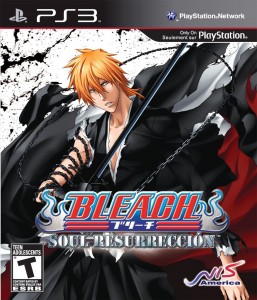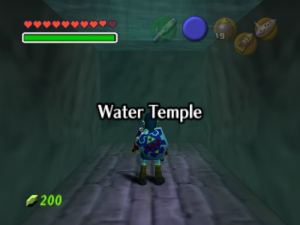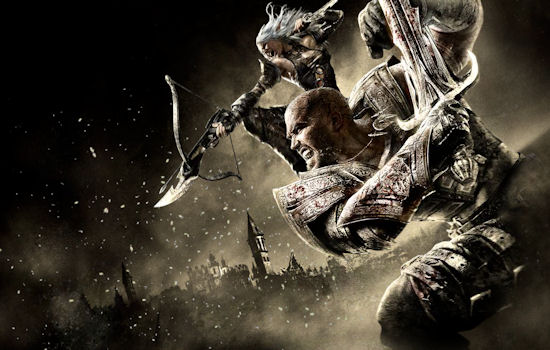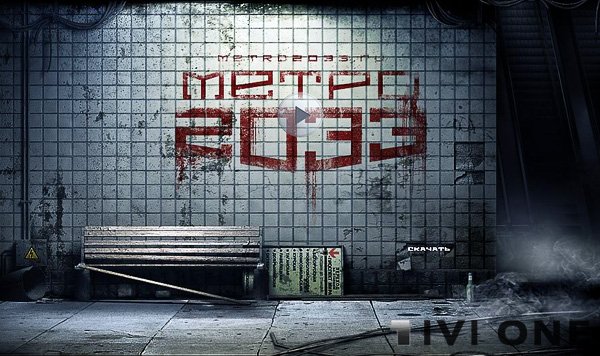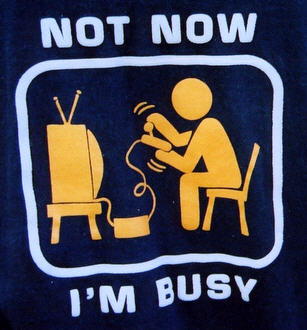
A few months ago I sat down to begin experiencing what I had been told was “one of the best gaming experiences ever.” While I disagree about it being quite that, I do agree that the game left quite an impact on me and has probably one of the best stories and themes I’ve ever seen in visual media.
Now, a few months later (ironically, the same period of time the game is supposed to begin around), I can say that I very much enjoyed a narrative experience called Persona 4. However, I also have to admit that I wasn’t really that enamored with a game called Persona 4. Allow me to elaborate (as if you had a choice).
There are two sides to the Role-playing game that is Persona 4- the “social” half and the “dungeon crawler” half. These two halves are linked in a way meant to immerse the player into the story and setting while still allowing for an entertaining game, but it ultimately ended up irritating me with the game half while I couldn’t stop playing the social half.
Dungeon Crawler

Elemental weaknesses in this game will confuse you
Persona is like Pokemon in that you “capture” said personas, which are stylized versions of various deities from a number of famous mythologies, and set them against other (corrupted) personas known as heartless Shadows. Also like pokemon, many of them are affiliated with various elements and use skills that are more or less effective against each other, though these elemental strengths and weaknesses rarely make sense. Meanwhile the skill trees follow their own spin of naming to figure out their usage at a glance, similar to Final Fantasy albeit with a limit to how many moves one Persona can perform.
–
Of course, no RPG is really complete without the dungeons to grind through, and Persona 4 doesn’t disappoint. Well, maybe it does. I get the feeling that I wouldn’t be able to enjoy most of the “classic” JRPGs if this is what they’re like (minus the story). I can only trudge through so many winding and mapped out hallways before I lose it, you know? The gameplay uses a turn-based system in-battle very similar to Final Fantasy and pokemon. All the basics are there- basic attacks, spells, items, running away, etc.

At this point, I think they just stopped trying
Despite the capture system employed that grants your main character any number of fantastic abilities, this is nothing new and unfortunately due to the way the element system is set up, the game doesn’t become tactically fulfilling until at least halfway into the game. In fact by the time you have personas of each elemental affinity, the entire battle system (outside of boss battles) is a series of spamming elemental attacks so that you can discover which technique one-shots which enemy. Beyond the irritating encounters of old enemies with new pain schemes, random battles become a constant cycle of switching personas, using the correct technique, and using the special party attack where the party wails senselessly on the enemy group until they’re all dead. Admittedly, some might find this battle system intriguing, especially since there are hundreds of personas and spells with which to customize your main character (your other party members maintain their personas and stat affinities throughout the game). But when you add this to the game’s demoralizing dungeons, it becomes an exercise in testing your diligence level.
Now, having covered the “meat” of this RPG, you would expect a brief overview of the story. Said basic story is that you are a high school student sent to a small town in Japan to live with your relative for a year. During that time you get involved in a supernatural murder mystery(tm) and learn the power of friendship(tm?) all the while racing against the clock to prevent world destruction. Think Majora’s mask + high school. Wait, that’s a bad example… While this synopsis may or may not sound interesting (and oddly similar to some Final Fantasy/Pokemon types), the game immerses the player in the world in a few ways that keep you interested and ultimately keeps “your” social life relevant.
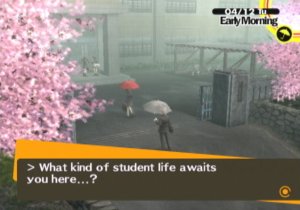
sex, violence, television. Take from that what you will.
The first way is that your main character is a relatively blank slate. Sure, he’s a guy from the city with parents working overseas with a preset appearance, but your past is mostly there in order to provide a point-of-reference for other characters you interact with. As a result, the player is able to imprint their own personality onto the main character. This is helped by the conversation system, a decidedly Japanese dating-sim style option where your responses produce a myriad of different dialogue. Were it not for the fact that you need to make certain responses in order to successfully get through the game (and additionally being prevented from making certain responses based on vague stats), this would go a long way to connecting the player with the protagonist. Nevertheless, the lack of details is what allows a player to focus on his/her interactions with OTHER characters as well as the town of Inaba so thoroughly.

The characters offer a truly profound outlook of the events around them
The second way this game immerses you in the world is the characters you interact with. True, you are charged with stopping a serial killer who the police are incapable of apprehending, but in the meantime your character is still a high-school student, a status that comes with all sorts of perks, limitations and responsibilities (the latter more than the former). Throughout the game you interact with a wide variety of characters in various situations, and while there is a fair bit of drama involved, you generally end up dealing with surprisingly mundane issues, though that aspect is what really connects people to this game. Between dealing with the loss of friends/family, social expectations, relationship/human interaction problems, gender identity, the role of family and why you shouldn’t eat unidentified food, the game’s narrative is linked far more closely to reality than many of the fantasy RPGs or shooting games that you will usually find in this media. The lessons these characters learned actually prompted me to conemplate these issues myself, albeit with far less success than “I” did in-game. The theme of this game, truth, hits home and brings up painfully accurate truths about human egos (and presents a more literal portrayal of human ids, actually).

The clock is always ticking, making this game almost as hectic as real life
The third way the game immerses you is the calendar system. Time is always moving in Persona 4. Whenever you perform basically any action, whether it be a trip to the dungeon to grind or simply going out to hit on your female party members, you are limited with the amount of time you have. You only have so many days to accomplish any goals or responsibilities you take on, and since the characters you deal with have their own schedules, you are always managing your time carefully. You could almost criticize how complicated the social half of this game is. I for one wouldn’t have been able to beat the game without the extremely well-put together guide.
One would think that it would simply be easier to ignore the social aspects of this game and just focus on grinding whenever possible. However, as one of the characters is quick to point out, you have a “life” to live (not to mention you’re probably playing this game for its story in the first place). The “bonds” you make with other people in this game actually go a long way to making you and your party more effective in the long run. Not only do various NPCs give you quests that result in helpful items, but all of the “social links” with major characters produce relevant bonuses that allow you to strengthen and customize your Personas to produce the best possible team, not to mention your party members are far more reliable when you max out their respective social links.
From a design perspective it seems like the social half of the game, while being the primary half that presents the story, was meant to be a hub that allowed the player to gather their strength before heading off into the great unknown of infinite hallways. However, in practice the game left me feeling as if the dungeon crawler aspects were actually almost tacked on in order for Persona 4 to be labelled as a proper “game” and not just another dating sim. I wasn’t even halfway through the game before I began experiencing a fair amount of irritation whenever I was forced to explore a new dungeon or level up more of my personas. In the end I was content to while away my time improving my virtual social life rather than fight hordes of copy-pasted enemies in strangely configured hallways for 3 hours at a time.
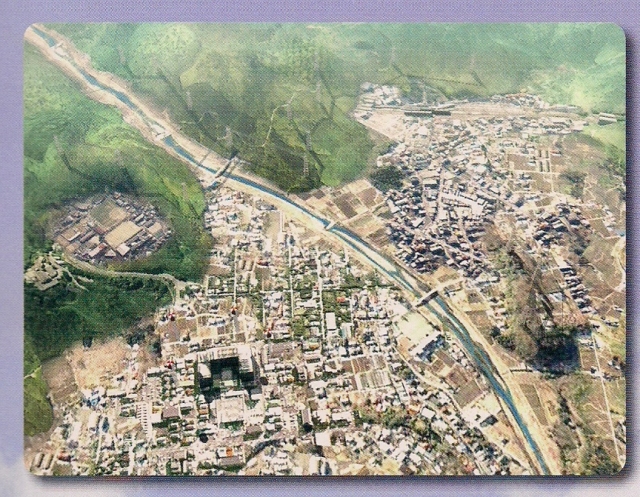
"Small" Japanese towns seem to have a different population densities than their counterparts in the US...
The first thing you will notice about Persona 4 is that it uses a japanese “anime” style. This works very well since the PS2 wasn’t exactly known for its stellar depictions of realism. That said, the experience is similar to that of FF7, where you interact with undoubtedly deformed “chibi” character models most of the time. It’s not hard to get used to, but is a bit off-setting, particularly considering that the cutscenes use a decidedly more mature look. The personas were apparently designed separately from the human characters as well, for they present far more “defined” character models than your party does.
As a JRPG, you spend a lot of time in the menus, which are thankfully unique as far as interfaces go. I can honestly say the bright yellow color scheme didn’t bother me that much. YMMV.
The Town of Inaba, which is its own character, is presented cleanly and clearly regardless of weather. Each area you visit is discernable and becomes familiar quickly. It portrays the feeling of a small town, though the Japanese have a different population density and standard of technology for their small towns than what Americans do. Still, it becomes familiar fast, and you stop having to guess where you’re going after a very short amount of time. I almost feel as if I could navigate the real city of Inaba, were it real.
The dungeons, as you may have surmised from my hallway complaint, are a series of hallways. That said, the aesthetic behind them is unique and original, from “heaven” to a strip club, the dungeons do at least vary in theme. Too bad the designs don’t hold up under scrutiny. Atlus should have taken its own advice: “People get excited fast and lose interest even faster… it goes round and round. There’s no underlying reason for it.”

This is how you stand out in a crowd
NPCs don’t stand out much, as they are designed to look like random passer-by, though they look just different enough from one another to not break suspension of disbelief. That said, major characters REALLY stand out at school, though the distinction isn’t as bad when other NPCs can be seen wearing brighter casual clothing.
Connected with the anime art-style of the game, characters often depict emotions with “e-motes” (sweat-drops for example) and body language in light of not having very descriptive faces. This actually helps convey the humor a great deal and makes for some hilarious scenes, though the more serious emotional scenes rely on subtler body movements and certain music in order to get the point across. It’s actually interesting how characters can portray emotions and dialogue more clearly than some of the nicer-looking next-gen games out there. Another point for the “graphics vs aesthetics” argument I suppose.
The dungeons, based on their themes, are presented clearly and uniquely. The TVworld has many stylistic designs and ultimately the world itself is a fitting contrast to the more rural Inaba. The hallways are still damn repetitive though. The spells are not particularly original in their depiction, but they get the point across and honestly that’s all you really need from a PS2 game.
Enemies, meanwhile, start out as being unique and an interesting departure from contemporary anatomy, but the sense of wonderment at their appearance quickly fades after the first dungeon when you realize there are basically 20 enemies in the game, constantly being re-used with different paint schemes and stat bonuses. While I am aware this issue is not limited to this game alone (or even this series for that matter) it is still offsetting. At least the bosses never get re-used.
MUSIC
 The game comes packaged with its own soundtrack for a reason. It is one of the most unique soundtracks I have ever listened to. I’m not particularly sure whether I find the music amazing or simply different, but I could not help but enjoy the soundtrack whenever it made itself heard.
The game comes packaged with its own soundtrack for a reason. It is one of the most unique soundtracks I have ever listened to. I’m not particularly sure whether I find the music amazing or simply different, but I could not help but enjoy the soundtrack whenever it made itself heard.
Sound effects are fairly basic, and are handled quite well. The Voice actors are very good in my opinion, though it varies from character-to-character. Random bits of dialogue popping up during conversations are a bit unsettling though. There’s also the problem of character voices being somewhat hard to hear during cutscenes.
I liked this game a lot more than I was expecting. Hell, I loved the story, as evidenced by my enduring endless hallways for hours on end. Few games have pulled me in and kept me engrossed in the way this game has, and NO game has hit quite as close-to-home for me. While I doubt I’ll play it again, I will always remember the story fondly. That, and I will also probably be able to employ the easier option of simply buying the TV anime adaptation that is supposed to be coming out soon. Let’s hope they don’t cut out too much.
In the end, though, the thing I got most about this game was probably… that every day is great… at your Junes. That or “Hasou Tobi is broken.”

Persona 4 was developed by Atlus
EDIT: Apologies if this review seems oddly cobbled together. After all, I did make it over the course of three months.

